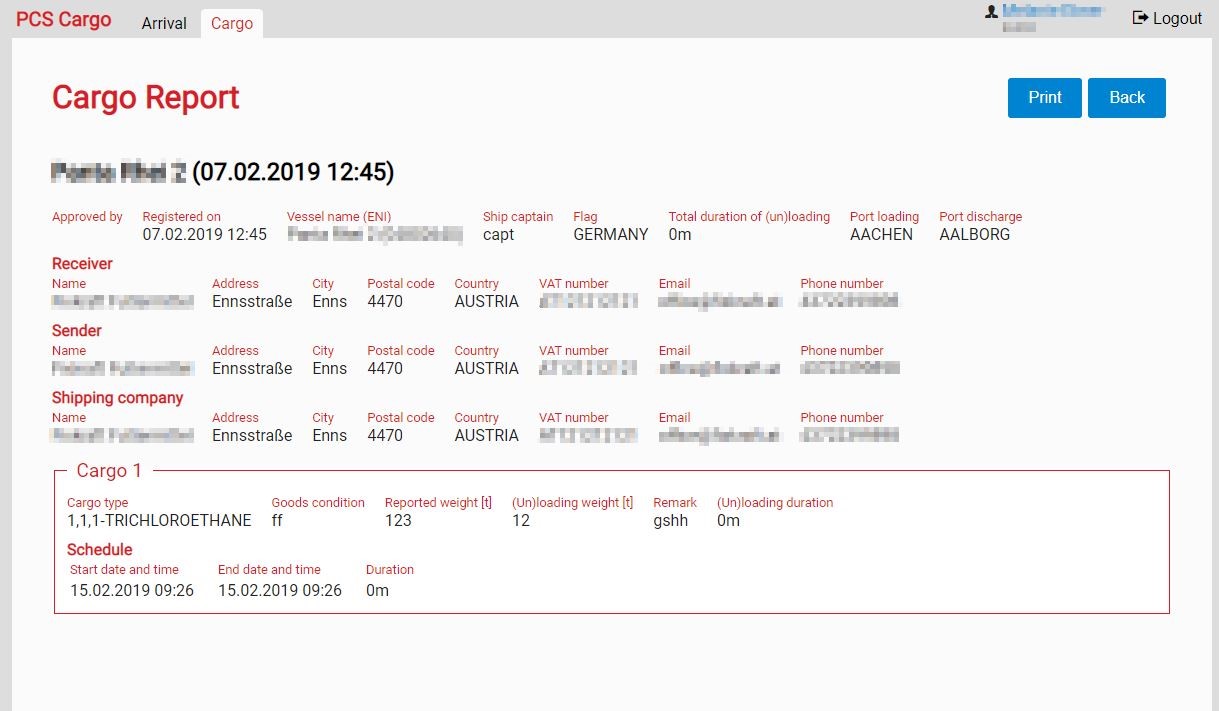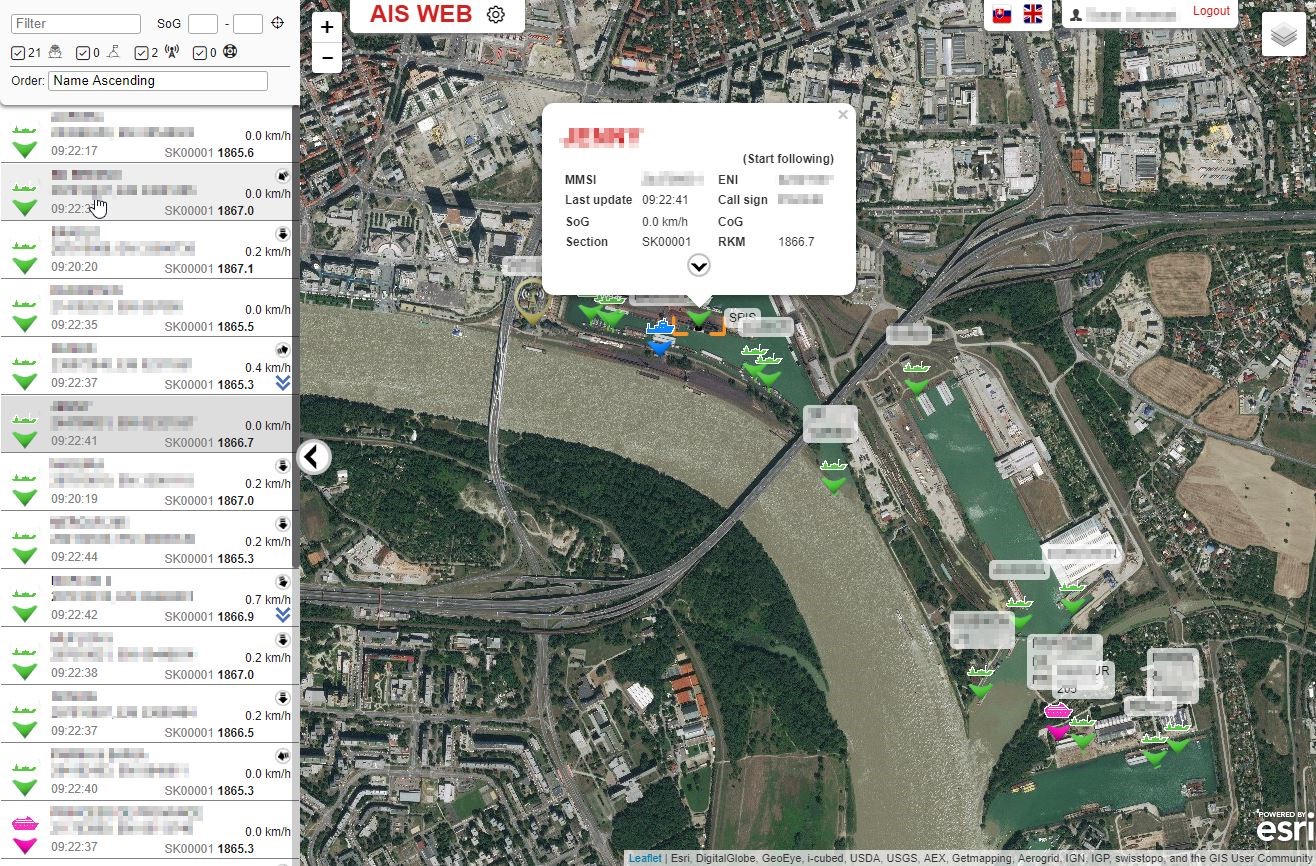DAPhNE - First steps towards the digitalisation of Danube ports in Austria, Slovakia, Romania and Serbia
12-02-2019
One of the key outputs of the DAPhNE project is the port community system (PCS) implemented through dedicated pilot actions at four different ports on the Danube.
PCS is an innovative electronic platform that connects multiple systems operated by a variety of organizations within a port area. PCS manages, optimizes and automates port and logistics processes through a single submission of data and connecting transport and logistics chains. It enables intelligent and secure exchange of information between port community members.

Having in mind the complexity of port operations at different ports, it is obvious that the operational needs of different ports are very different in functionality, scale and accessibility. Therefore, the activity leader, RGO communications Ltd. has opted for a scalable and modular approach to PCS implementation. The initial step was to deliver system architecture through different functional modules, which included a technical specification of the following 8 modules:
- Statistics
- Berth management
- Billing
- Storage allocation
- Interface to other transport modes
- Core module
- Cargo module
- Tracking and tracing module
whereas the last three modules were implemented and tested at ports of Bratislava, Enns, Smederevo and Novi Sad.
Modules Core, Tracking and Tracing and Cargo were installed in Bratislava and Enns in October, whereas installation of all three modules for ports of Smederevo and Novi Sad was completed in December 2018. The demo cases will be running until April 2019, where PCS users will be using and testing them in order to optimize the systems to their own needs.

Romanian partners (APDM and MPAC) have conducted pre-feasibility studies to assess the needs and relevant solutions for the future rollout of PCS in their ports.
Pre-Feasibility Study for Port IT Community System (PCS) at the Maritime Danube Ports (Galati, Braila, Tulcea)
In the framework of the DAPhNE project, APDM assessed the possible solution for allowing a smart and secure exchange of information between the members of their port community by means of fully-operational port IT community system.
Currently, port actors usually exchange information by fax, e-mail, telephone, etc., this reducing the efficiency of the port operation due to factors such as different message formats, paper management, double filing of data, loss of data, etc. The PCS solution will manage, optimize and automate port and logistics processes through data transmission and connecting the transport and logistics chains.
The conducted pre-feasibility study has identified and provides a method of effective communication between APDM and all the involved stakeholders, such as ships and ship owners, internal staff.
At present, the data flow is not supported by an integrated IT system and the interaction between ship owners / agents, APDM takes place mainly by direct telephone communication and email. Thus, the integration of invoicing data and the analysis requires an additional effort from APDM and this is also an element which generates technical errors.
Digitization of the main processes involving interaction between the involved parties in port operations will provide a new growth opportunity for both operators and port authorities. Such data collection in a form as easy as possible and the delivery of electronic services associated to them will grant a new dimension to processes and operations at the level of ports. The expectations of the economic operators are to enter only once the data associated with a process and then all the actions associated with these data are to be performed automatically / manually in PCS depending on other input / output parameters.
In order to analyze the technical solutions on the project implementation, two possible scenarios were considered:
- Scenario 1: Development of IT Solution and its Operation on the Premises
- Scenario 2: Development of IT Solution and its Operation in the Cloud
Among the expected results are:
- Improved management processes related to the operational activities executed on ports
- Improved forecast of requests from vessels which will arrive in APDMs ports
- Systematization of information flows and clear situation of the documents issued by all PCS users
- Reducing the time to issue the appropriate requested documents, with positive effects on labour productivity
- Improving the business management behaviour of APDM
At the same time, Maritime Ports Administration Constanta (MPAC) was responsible for carrying out a Pre-Feasibility Study on the Port IT Community System (PCS) in Constanta Port (Constanta, Midia, Mangalia) based on the “Model architecture for Port Community System (PCS)” developed by RGO Communications Ltd.
The main purpose of the Pre-feasibility Study was to:
- identify the existing context in which the PCS should be implemented
- determine, analyse, and select the best business scenarios for implementing a PCS in Constanta Port (Constanta, Midia, Mangalia)
- estimate the costs and duration for the implementation of PCS
- identify the potential sources for public investment financing
The pre-feasibility study proposes three scenarios as follows:
- The first proposed scenario is oriented on “bilateral messages exchange” and considers the implementation of an identical PCS platform with a port that already has the PCS system implemented and with which Constanta Port develops most of its commercial trading – to facilitate reporting and data sharing between the two ports.
- The second scenario considers the implementation of an identical PCS platform with a port that already has the PCS system implemented, by extending the PCS of the first port so it can simultaneously serve two or more ports.
- The third scenario considers the implementation of a custom-made PCS platform for Constanta Port and compatible with similar PCS in other (connected) ports in terms of functionality and data exchange.
Based on the identification and selection of the most suitable scenario, a future feasibility study will be able to provide more accurate details regarding the estimation of the costs and duration for the implementation of the PCS.
Also, the study presents potential sources of financing for the development and implementation of the PCS in Port of Constanta, with emphasis on structural funds (Transnational Danube Programme, CEF, Regional Operational Programme).
As a conclusion, the following aspects are taken into account:
- MPAC considers the implementation of modern Port Community System (PCS) in the near future in order to optimize, manage and automatize the port processes.
- Constanta Maritime Ports Administration will need to assume the leading and integrating role of the Port Community Systems (PCS).
- The development and introduction of such a PCS platform is a very complex activity which will require prioritization.
- Constanta Maritime Ports Administration must consider establishing a good connectivity between IM-Comm interface communications from the railway system together with the Port Community System (PCS) and also the Maritime Single Window interface and “e-customs”.
